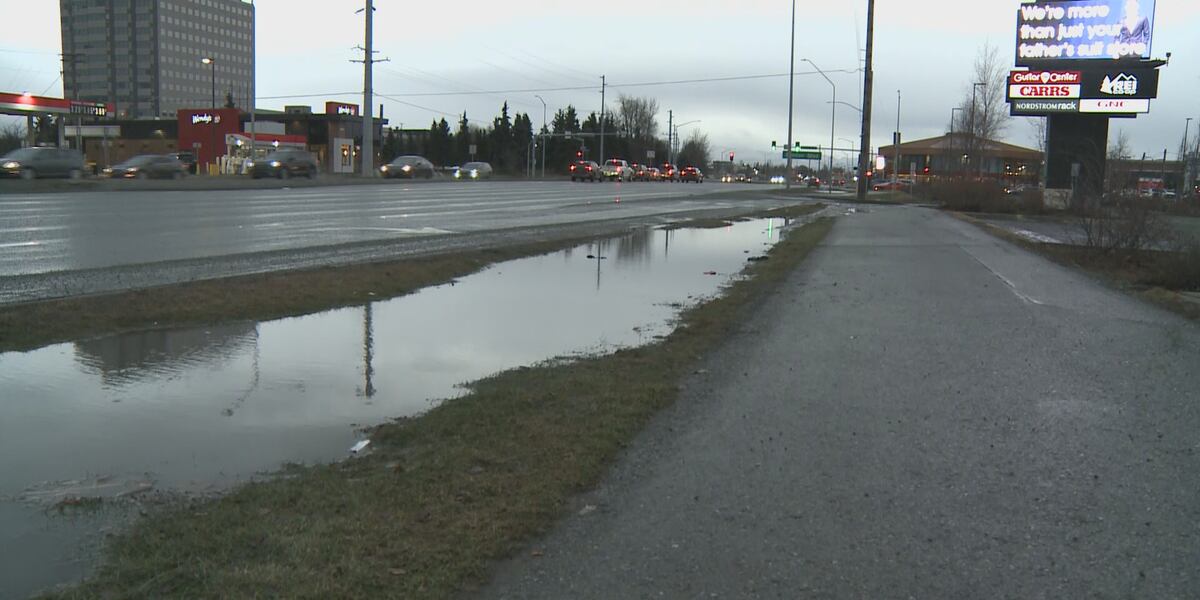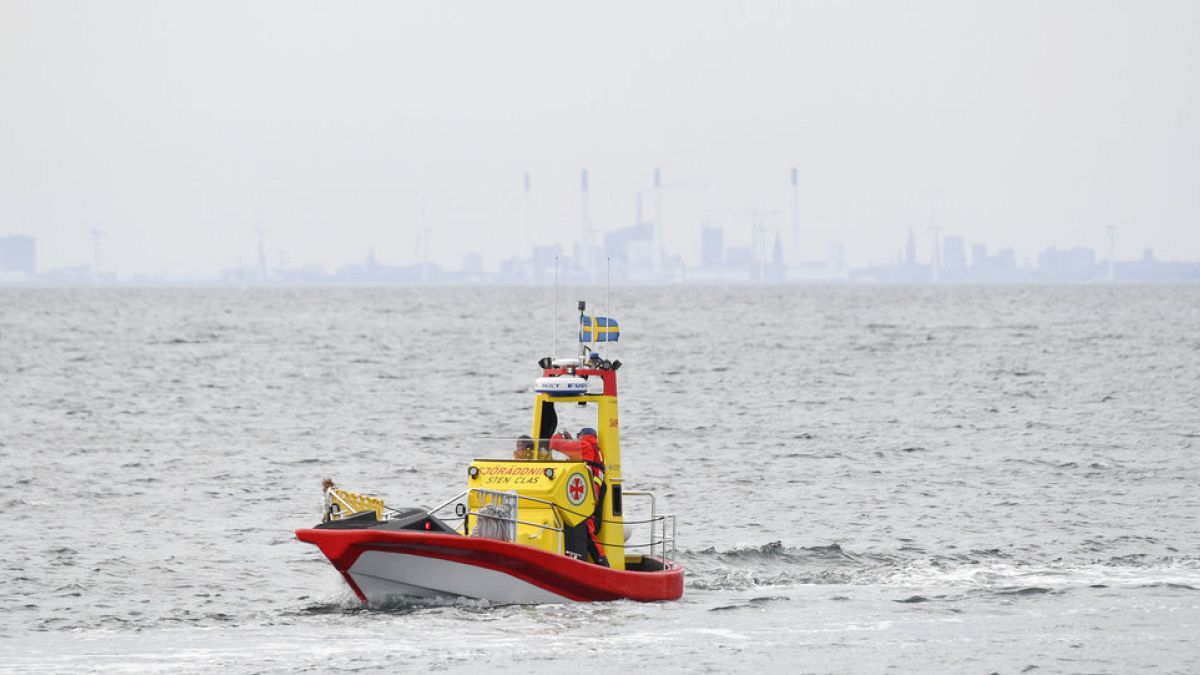While Alaska representation in professional sports leagues has historically been sparse, the 49th state currently has a strong delegation competing at the highest level.
In the NHL, the state has had a steady stream of pros, including Anchorage’s Jeremy Swayman and North Pole’s Pheonix Copley, who are both active as goaltenders for the Boston Bruins and Los Angeles Kings, respectively.
Fairbanks’ Ruthy Hebard won a WNBA championship with Chicago Sky in 2021, and the state is represented in the NBA by JT Thor of the Charlotte Hornets and Daishen Nix of the Atlanta Hawks.
However, one major sports league where players with Alaska roots have been noticeably absent is in the NFL.
According to Maxpreps, Alaska was one of three states that didn’t have a single player on an active roster in Week 1 of the 2022 NFL regular season along with Vermont and Maine.
That number will be subject to change this fall, after a trio of Alaska-born players had their dreams come true during the weekend of the 2023 NFL Draft late last month.
Tyree Wilson, born in Anchorage, was selected No. 7 overall by the Las Vegas Raiders in the first round. Palmer’s Malaesala Aumavae-Laulu was selected No. 199 overall by the Baltimore Ravens. Even though he didn’t hear his name called, Anchorage’s Brandon Pili signed a priority free agent contract with the Miami Dolphins after going undrafted.
:quality(70)/cloudfront-us-east-1.images.arcpublishing.com/adn/INVU7LFTPMGKLDF7BDEDHSQSTA.jpg)
Alaska born, Texas raised but still claiming the 907
Wilson was born in Alaska but moved to Texas when he was just 2 years old. Even though Wilson spent the least amount of time of the three living in the state, his mother, Tiffany Weatherton, says her son still claims the 49th state.
“All the time. He’ll let people know he was born there,” said Weatherton, who was a track star at Dimond High in the early to mid-1990s and held a state record in the long jump.
After she and Wilson’s father got divorced, Weatherton decided to move to Texas, where her father is originally from.
“He was retiring from the military and he didn’t really want me to stay there because they were my only family,” she said. “I decided to move the kids down to Texas to be closer to my parents.”
Her son was one of the top prospects in this year’s class and was projected to go as high as No. 2 overall in several mock drafts. When the time finally arrived, Wilson didn’t have to wait long on the first night of the draft to hear his name called.
“When his phone finally rang, in my mind I was like, ‘He did it, he did it,’ and then tears started rolling down my face,” Weatherton said. “I was so happy for him.”
:quality(70)/cloudfront-us-east-1.images.arcpublishing.com/adn/5LQOAOKSMAFSO6VUGXV34DVY74.jpg)
When the Raiders turned in the card with his name on it, the former Texas Tech University standout became the highest drafted Alaskan in the history of the the league, topping North Pole’s Daryn Colledge, who was taken No. 47 overall in the second round of the 2006 NFL Draft out of Boise State.
Wilson was always athletically gifted growing up and took a real shine to football, but it wasn’t until his third year of college when his family realized that the NFL was a real possibility for him.
“After he played in the Liberty Bowl in December of 2021 against Mississippi State, that’s when I started saying, ‘Yeah he really does (have a shot),’ ” Weatherton said.
He had a monster game as the Red Raiders throttled the Bulldogs 34-7. Wilson finished with four solo tackles including two for a loss, two sacks and a pass deflection, per Sports Reference.
“He came back for his last year of college to play, and he did really well and agents were reaching out to him,” Weatherton said. “He had me go on interviews to make sure he picked the right agent for him and the rest is history.”
:quality(70)/cloudfront-us-east-1.images.arcpublishing.com/adn/BSD63GG4OVQS5B75LX2Z7CLIJY.jpg)
A Palmer legacy making his family proud
Aumavae-Laulu was born and raised in the Mat-Su, where he grew up looking up to his uncle Junior Aumavae, who was a Palmer High and Alaska sports legend signed by the Dallas Cowboys after going undrafted in 2010. Dallas released Aumavae over that summer, but in 2013 he signed with the New York Jets, where he spent a short stint on the Jets practice squad.
Aumavae-Laulu was slated to follow in his uncle’s footsteps and played his freshman year in Palmer, but when an opportunity arose for him to move out of state and gain more exposure, his family decided that was best for his future prospects in the sport.
“It was just a great opportunity for the family to get him more exposure,” Aumavae said. “We had family out there in Las Vegas that made the connections so that we could go out there, get him exposed to one of the schools near the family.”
His nephew wasted no time asserting himself as one of the top players in Nevada at Liberty High School, which was one of the top 15 schools in the nation.
“Right away the level of competition was high, and he adjusted well,” Aumavae said.
His uncle said Aumavae-Laulu was taught to lean on his faith to get him through any hardship on and off the field.
“He’s a very humble kid,” Aumavae said. “When he is taking in information, coaching or wisdom from other coaches or pastors, Sala is very humble and very respectful. He listens and he makes those improvements.”
That mentality made him one of the top junior college recruits after he spent two years at Navarro College in Texas. He transferred to Oregon, where he became a three-year starter for the Ducks and emerged as a legitimate NFL prospect.
[Alaska wrestler Spencer Woods proves ‘7th time is the charm’ with win over two-time Olympian]
Aumavae-Laulu and his family were all “die-hard” Raiders fans while he was growing up, but now that he plays for the Ravens, they’re trading in their silver and black allegiances for the black and purple.
“It’s family first,” Aumavae said. “Wherever our family is at, we support them 100%, make sure they’re successful with our support and we’re part of that (Ravens) flock nation now.”
Aumavae-Laulu’s uncle believes that his journey can serve as a source of inspiration to Alaska’s youths because it gives them more hope and puts Alaska “on the map.”
“The number of people that make it to the league is less than 1%, so to make it out of Alaska is an even bigger accomplishment,” Aumavae said. “You’re coming from the frozen tundra and don’t have the privilege to be outdoors all year like in Florida and Texas.”
:quality(70)/cloudfront-us-east-1.images.arcpublishing.com/adn/TS6AL6YU5X5IBAGWYCXIF7W6WI.jpg)
Former Dimond star has a chance to prove himself
Of the three Alaskans who had their dreams come true on draft weekend, Pili lived in Alaska the longest and was the only one to graduate from a high school in the 49th state. With his immediate family living in Anchorage, Pili still calls Alaska home.
“I carry my family’s name with me and carry Alaska with me everywhere I go because a lot of people have never met anyone from Alaska,” he said. “It’s just a blessing to be able to carry it with me.”
Unlike Aumavae-Laulu, he didn’t decide to leave the state during his high school playing career until his senior year, after starting for three seasons on varsity at Dimond High.
“My dad wanted me to get out for a while before my junior year,” Pili said. “At the time, I didn’t really take that seriously because I thought I’d just go JUCO or Division II.”
He didn’t think he was going to able to join a top-tier Division I program until he went to a camp at the University of Washington.
“I went on an unofficial visit there, and they told me that it’s rare for a dude my size to be moving how I move,” Pili said. “They told me I had a real shot at playing at the next level, so that’s when I really knew that I could go Division I.”
He moved to Oregon to live with his aunt and uncle and played his senior season at Westview High School near Beaverton, Oregon.
In his first game with the Wildcats, he wreaked havoc on the No. 5-ranked team in the state, which had three players committed to Oregon State University.
:quality(70)/cloudfront-us-east-1.images.arcpublishing.com/adn/ZXKBLUBAW5HYXHIVE67CSQLYPU.jpg)
After that, Division I offers started flooding in, but he ultimately decided to go to the University of Southern California because of the rich history of successful Polynesian players who attended the school, such as Hall of Famers Troy Polamalu and Junior Seau.
“Just with the history of the program and after I met with the coaches, I just fell in love with the place,” Pili said.
He went on to have a solid collegiate career, with 74 total tackles including 10 for a loss, four sacks, four pass deflections and a forced fumble, according to Sports Reference.
He was hoping to hear his name called sometime on the third day of the draft, and figured it was a “50-50 shot.”
“I wasn’t really expecting anything but I was hopeful,” Pili said.
He had been in communication with the Dolphins throughout the predraft process thanks to a close connection he has on the coaching staff.
Miami’s defensive line coach, Austin Clark, was Pili’s position coach during his freshman year at USC in 2017.
Although the Los Angeles Rams and Seattle Seahawks showed interest in signing Pili, it was the Dolphins who were willing to make the largest financial commitment.
“They definitely made the best offer and then I had already been chopping it up with my old coach,” Pili said. “It means the world to me. I told my dad all I needed was a shot to get my foot in the door, and I’m so grateful for the Dolphins to see something in me and give me that shot.”
The magnitude and wave of emotions didn’t hit him until he had his official paperwork faxed to him. The text read “NFL Player Contract” at the top of the page.
“It was just a real surreal feeling,” Pili said. “All the emotions started flooding in. I hadn’t really taken it in yet but after I saw that contract and saw the money, it was getting kind of crazy.”
:quality(70)/arc-anglerfish-arc2-prod-adn.s3.amazonaws.com/public/LMRYPJEBLRBLVEUVR6OSFWJN74)
Pili said it’s “great to see” as many Last Frontier connections to the league as there are this year. He hopes it’s just the beginning, and that it inspires more young Alaskans to dream big and broaden their horizons.
“I think it’s going to be huge,” he said. “When you come from a place like this, many people don’t make it out of here in pro sports, so when the very few do, I think it just motivates the kids to chase their dreams. It gives them hope that they can achieve their dreams too.”
[Anchorage breakers hope to represent and inspire Alaska by reaching the Olympics]

:quality(70)/cloudfront-us-east-1.images.arcpublishing.com/adn/ZPWWEBTZBZAVVCMQOZRWQCKUDA.jpg)
:quality(70)/cloudfront-us-east-1.images.arcpublishing.com/adn/OKTEZ5SQXRAGTBOPGZGGP6KNS4.JPG)
:quality(70)/cloudfront-us-east-1.images.arcpublishing.com/adn/RBRMRJUJNVDS7HAICC6RDG6JCU.jpg)
:quality(70)/cloudfront-us-east-1.images.arcpublishing.com/adn/QWJGBSE7BZD2DMEBMT2TMHVUFU.jpg)
:quality(70)/cloudfront-us-east-1.images.arcpublishing.com/adn/C7KD3Q7N63QZP6LZHCB7443ZS4.jpg)
:quality(70)/cloudfront-us-east-1.images.arcpublishing.com/adn/PMYN26DEGBBE5I42XMIRDDEPYM.jpg)
:quality(70)/cloudfront-us-east-1.images.arcpublishing.com/adn/VE4BAFJNCJECDBQXXJDZIJGGL4.JPG)






















:quality(70)/cloudfront-us-east-1.images.arcpublishing.com/adn/QRZTXEIGNJF2JJSRB2QJFU2Y5U.jpg)
:quality(70)/cloudfront-us-east-1.images.arcpublishing.com/adn/AOGVAF47XZH4PL3LZLOFYZ35XI.JPG)















/cdn.vox-cdn.com/uploads/chorus_asset/file/25835602/Switch_DonkeyKongCountryReturnsHD_scrn_19.png)






